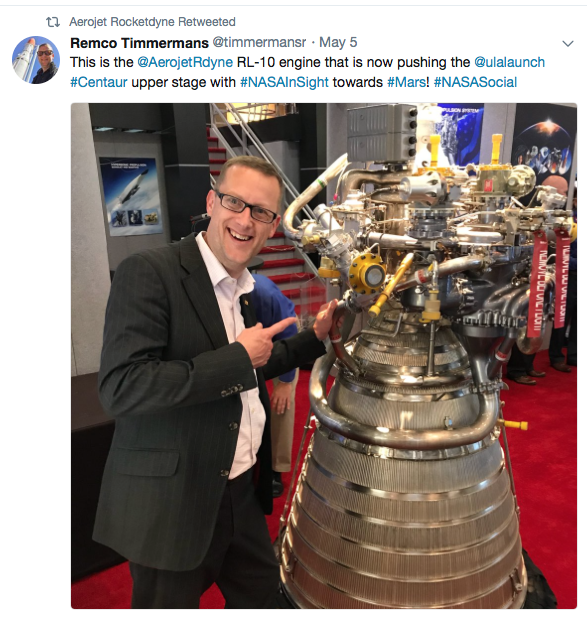

Liftoff and launch wouldn't have been part of the description of the launch of InSight if there wasn't the propulsion system to send it all upward. That's where Aerojet Rocketdyne has made its contribution to the NASA InSight Mars lander mission, from liftoff to landing, Aerojet Rocketdyne is a critical part in the NASA InSight Mars lander mission, that took place on May 5 from Vandenberg, Air Force Base, California, aboard a United Launch Alliance Atlas V rocket.
NASA’s latest visitor to the red planet will rely on Aerojet Rocketdyne propulsion systems during the launch, cruise, entry and landing phases of its journey. All of these systems must execute flawlessly and in sequence for the mission to succeed.
Aerojet Rocketdyne CEO and President Eileen Drake said that Mars missions, especially those that deliver a lander to the planet’s surface, are notoriously challenging, but their team of experienced propulsion engineers is up to the task. Aerojet Rocketdyne engines have flown aboard every NASA Mars mission, including orbiters and landers, since 1975.
InSight, designed to gather data on Martian seismology, will be NASA’s first interplanetary mission to launch from Vandenberg; previous missions have lifted off from Cape Canaveral Air Force Station, Florida, where lower latitude translates into added boost for the launch vehicle courtesy of the Earth’s rotation. The Atlas V, whose Centaur upper stage is powered by a single Aerojet Rocketdyne RL10C-1 engine, is powerful enough to launch planetary probes from either U.S. coast, depending on their mission mass.
During its six-month transit to Mars, InSight will be guided by eight Aerojet Rocketdyne cruise engines, which will make precise burns—some preplanned, others as necessary—to ensure an accurate orbital arrival to the red planet. These engines are contained in four Rocket Engine Modules, each consisting of one MR-111C and one MR-106E, generating one and five pounds of thrust, respectively.
InSight will rely on six pairs of Aerojet Rocketdyne MR-107N engines, each engine generating 50 pounds of pulsed thrust, to bring it to the Martian surface in a controlled manner. Before touchdown, the engines will have to steer InSight clear of the parachute, lest it come down on top of the lander. Once that is accomplished, the thrusters will slow InSight to a speed of about 10 kilometers per hour, enabling a soft touchdown.

